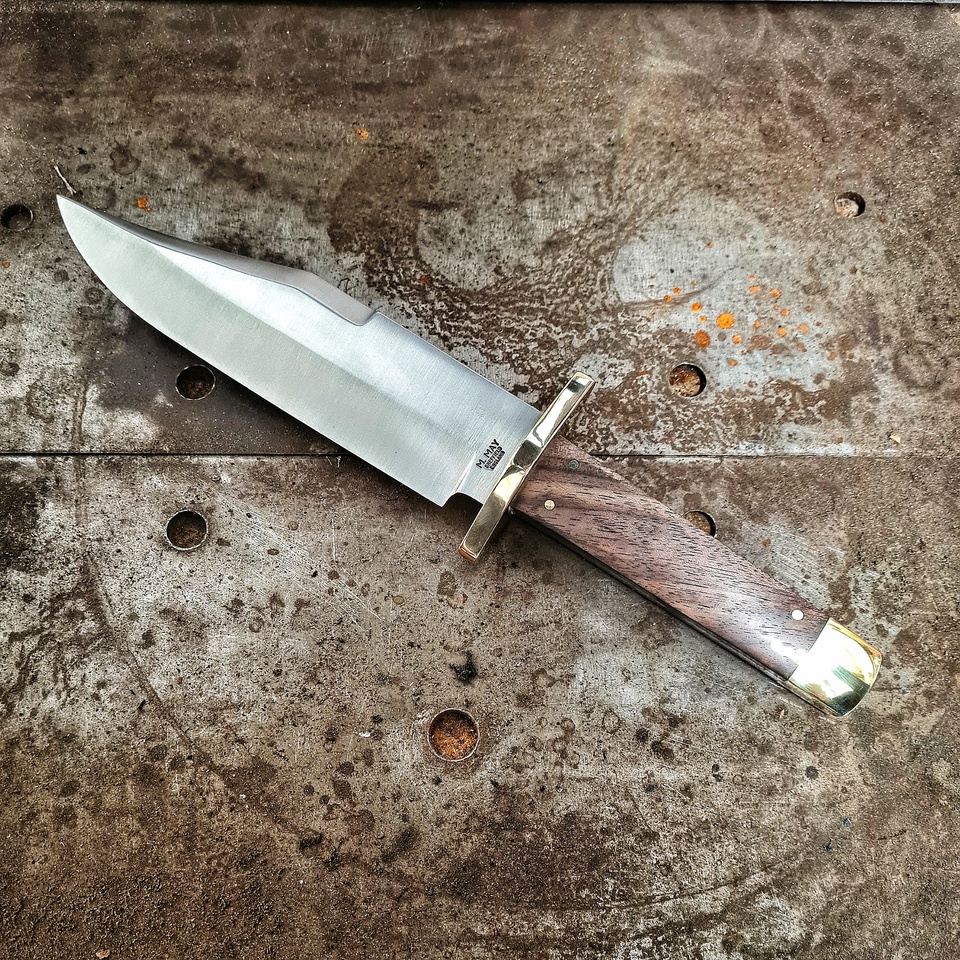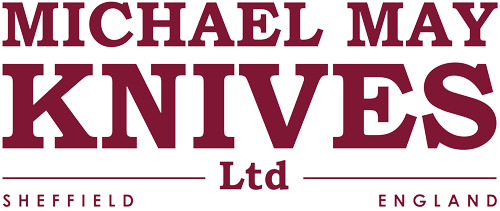If there is one knife that surpasses the fame of the Barlow knife, then it is the Bowie Knife.
There are many stories relating to the origins of the knife, but perhaps the most convincing account can be found with Lucie Bowie, a member of the Bowie family, in a speech delivered to the Bucks County Historical Society. We must take into account that the events that Lucie Bowie talks about are nearly ninety years old by the time she told the story.
The bowie knife entered popular imagination soon after 1827 following the ‘Sand-bar fight’. However, the Bowie knife itself was a new invention at that time. While the Bowie family lived in Opelousas, Louisiana, Rezin Bowie was attacked by a bullock, and in defending himself with a hunting knife he nearly severed his thumb off following striking the bullock’s tough horn. Traditionally, hunting knives had no guard, had this being the case such an occurrence would not have happened. Rezin subsequently asked Jess Cliffe, the blacksmith on the Bowie’s plantation, to fashion a single edged blade, nine and a quarter inch long and one inch wide, complete with a guard. Cliffe accordingly had forged a knife that would subsequently bear the name of his employer.
Following a feud with some newcomers to Louisiana, Rezin’s younger brother James was shot at while he was unarmed. Following this, Rezin gave his knife that Cliffe had made for him, as he felt it better protection should his pistol misfire at a crucial moment. The Sand-bar duel was the culmination of this feud. James Bowie was faced with four attackers; these were Doctor Maddox, Colonel Crain, Major Morris Wright, and Mr Blanchard, who had just mortally wounded James’s cousin Samuel Cuny. It was the actions of Major Wright that caused Bowie to use his knife. Wright attacked Bowie with his sword cane which led Bowie to defend himself using the knife. The mêlée ended with the death of Wright and the severe injuring of Bowie who needed several months to fully recover. It was during that period that the story of how Bowie defended himself from four attackers using this knife gained popularity and became a popular folklore story. As a result, the knife itself became an item of fashion.
One of the first Sheffield knife makers to visit America was George Wostenholm in 1836. The journey from Liverpool to New York took six weeks. Just nine years after the Sand-bar fight, Wostenholm had set up agents in both New York (Chamber Street) and Philadelphia (Commerce Street) to help with the demand for Sheffield made Bowie knives. It was around the 1845 period that Sheffield bowie makers began to decorate their blades to appeal to the patriotic American settler. Acid etchings baring such slogans as ‘America Land of the Free’, ‘California Toothpick’, ‘Ohio Knife’, and ‘Arkansas Toothpick’. During the civil war period in 1861, bowie knife etchings had mottos such as ‘Death to the Traitors’, Death to Abolition’, ‘The Union shall be free’, and ‘One America’.


Recent Comments